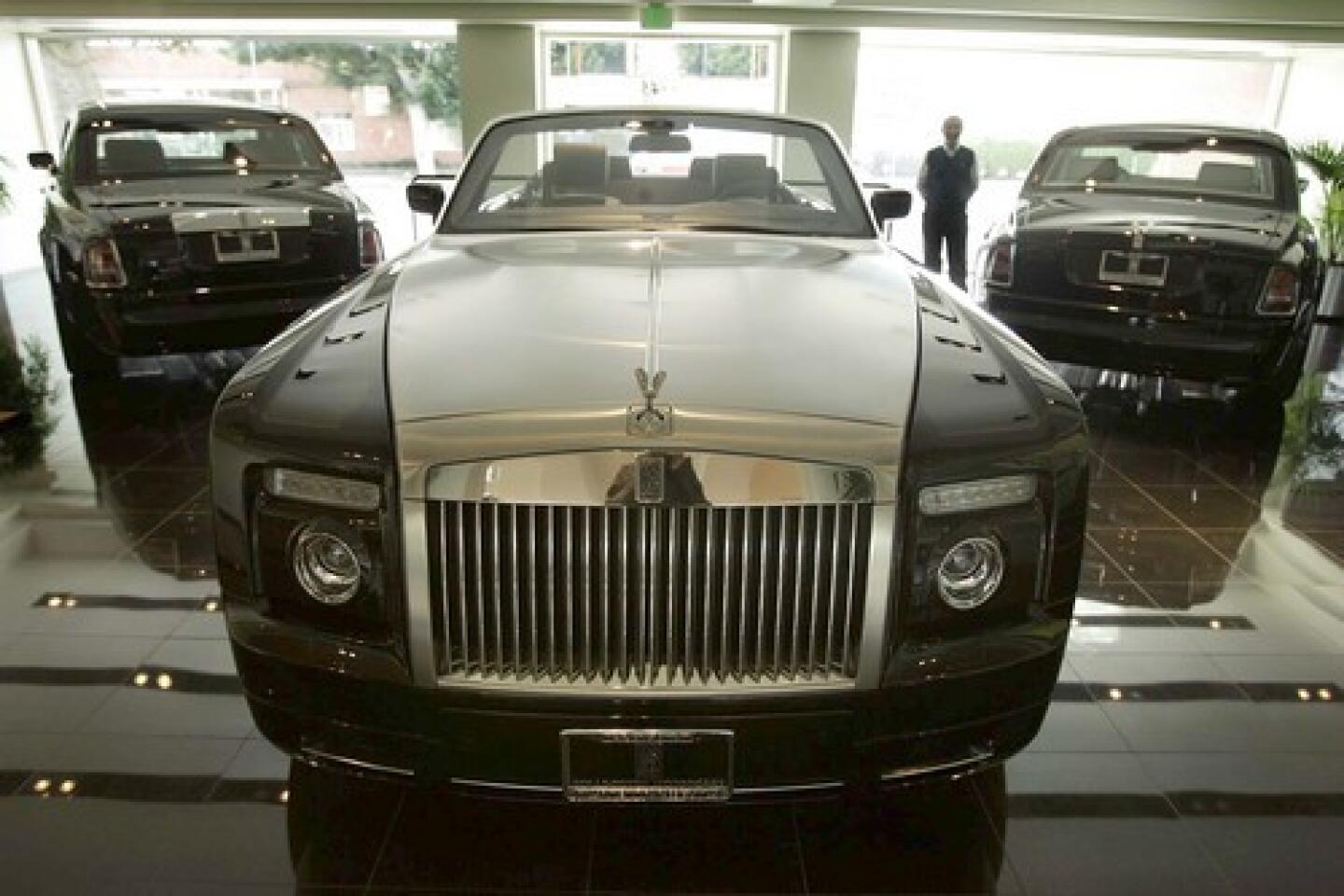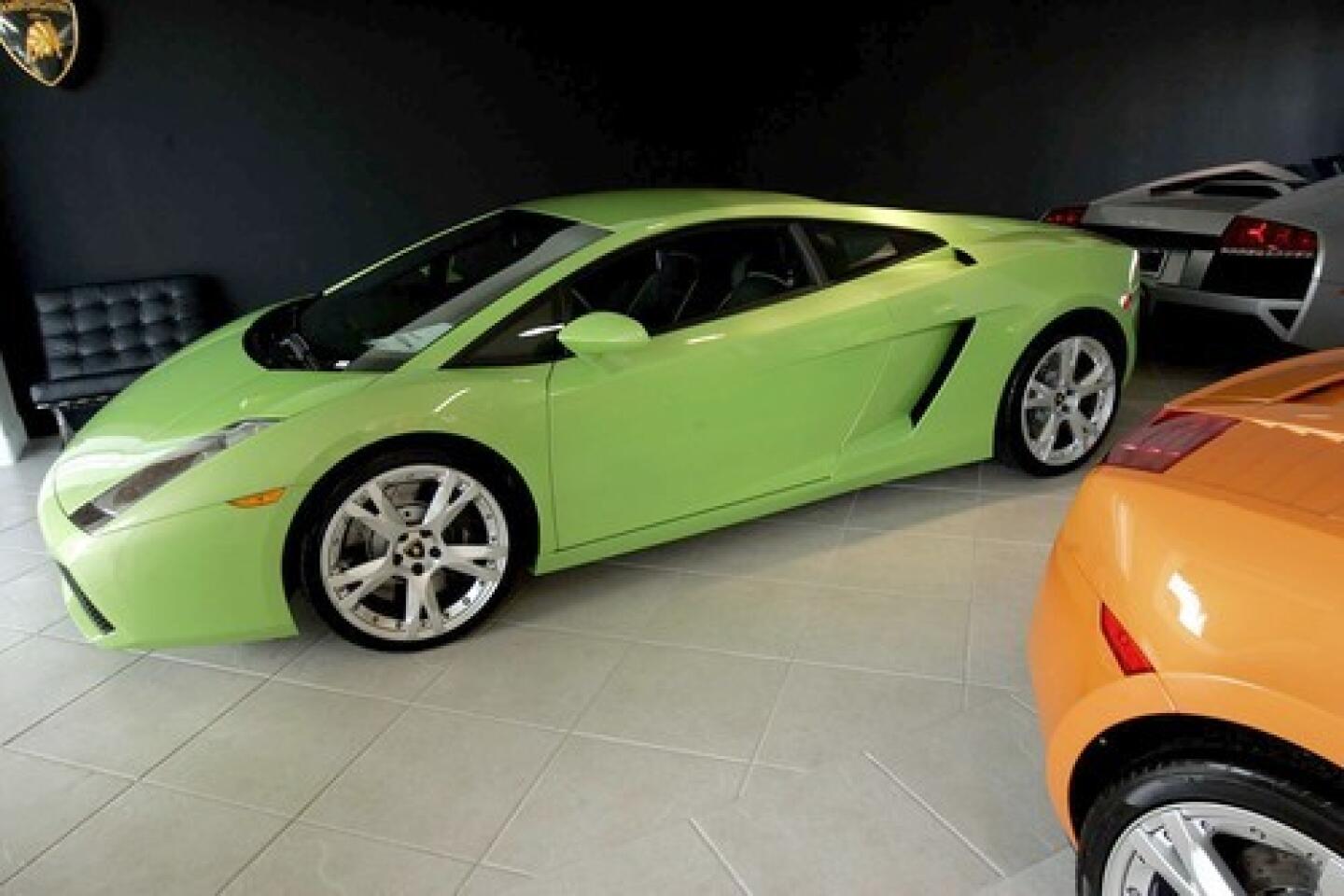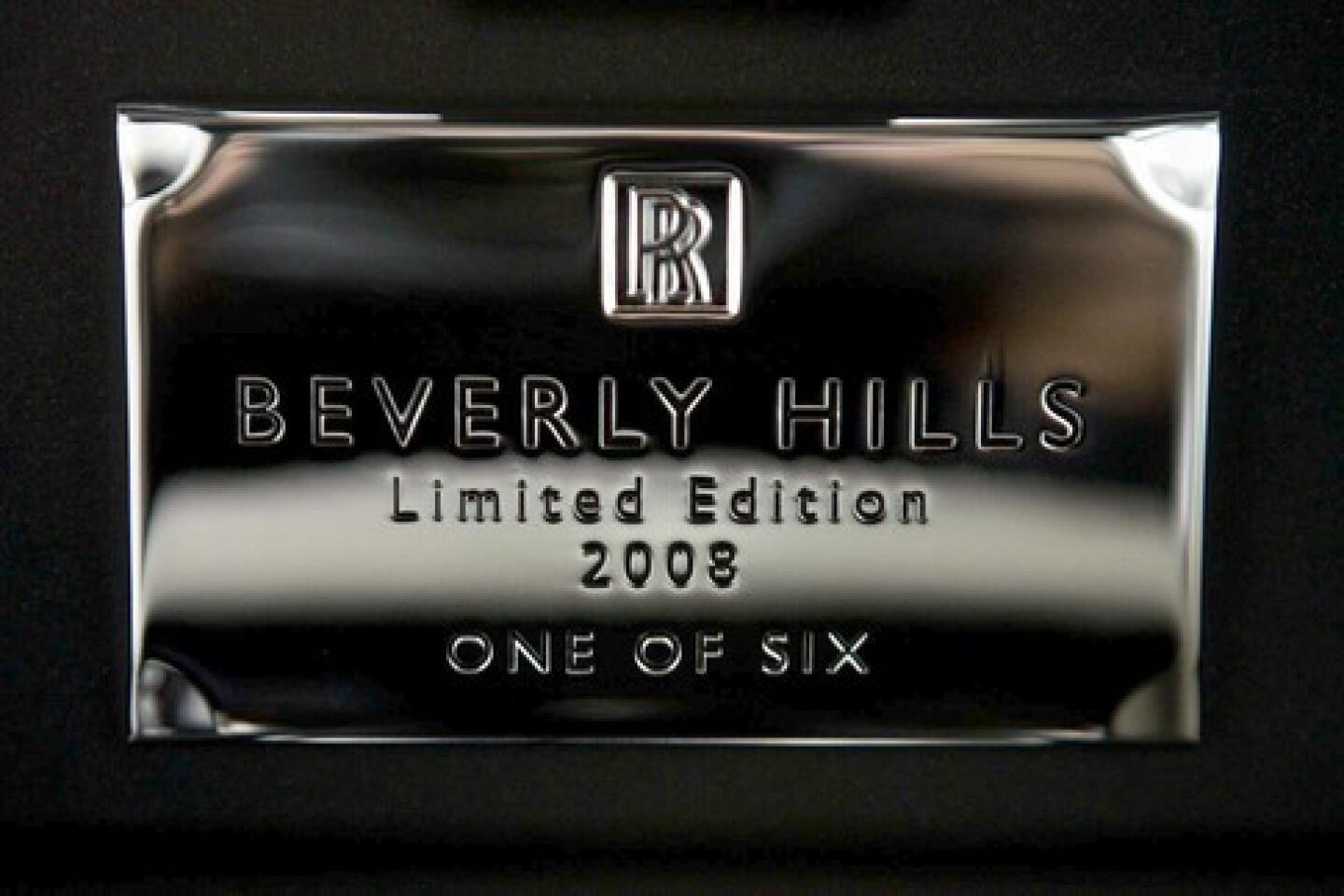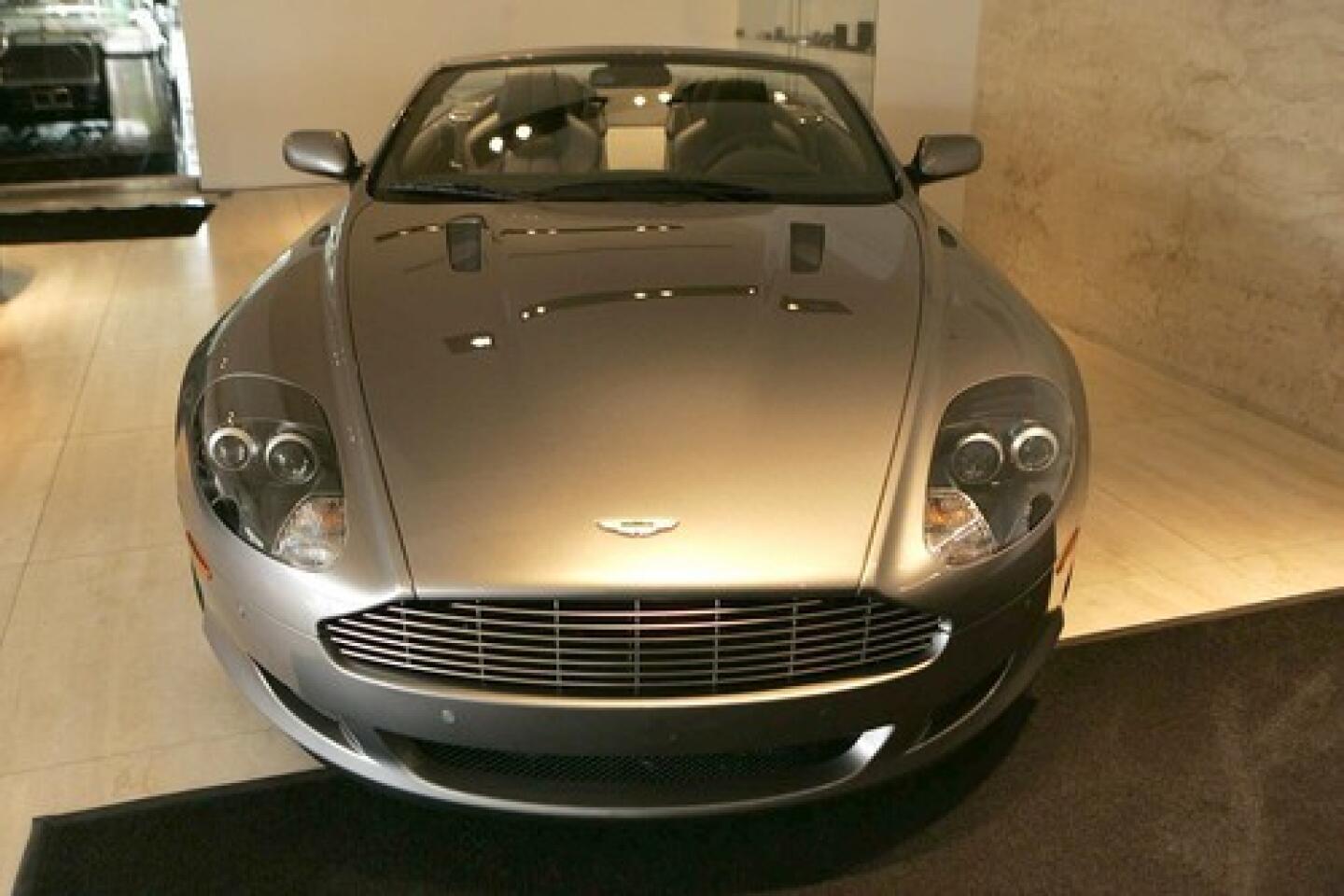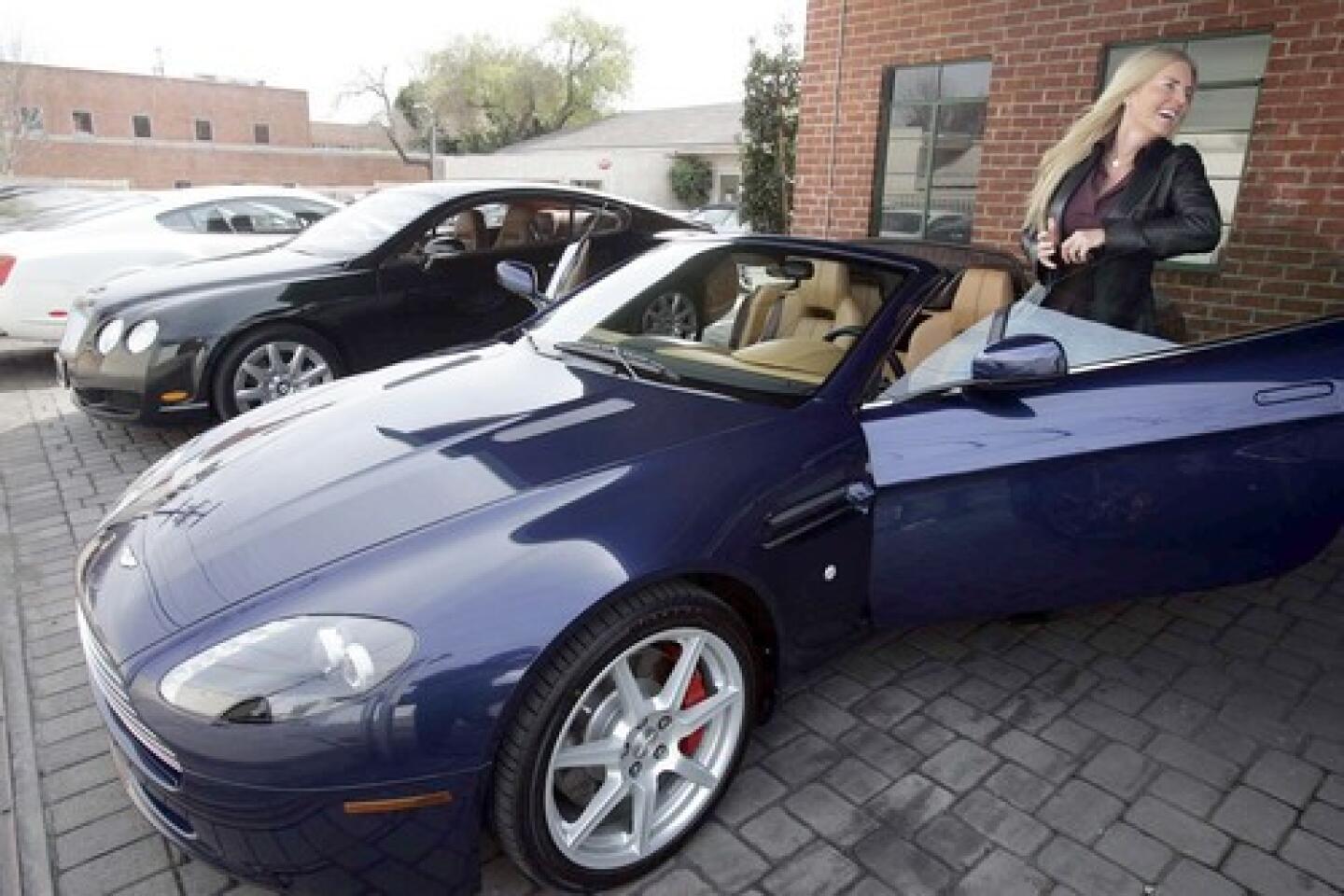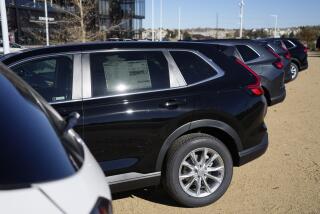No. 1 Rolls dealer rates special perks
Rolls Royce normally transports new cars from Chichester, England, to Southern California by sea.
But if there’s a particularly impatient customer at O’Gara Coach Co. in Beverly Hills itching to plunk down $350,000 for a Phantom, Rolls has been known to line up a jet, tout de suite.
Such are the advantages of being No. 1.
O’Gara has been the top-selling Rolls Royce dealership in the world for five years running. It’s also tops worldwide in Bentley sales, and numero uno in North America for Bugatti and Aston Martin.
But nothing compares to its Rolls Royce juggernaut. Last year, O’Gara sold 58 Phantoms and Drophead Coupes -- that’s about 15% of all Rolls Royce sales in the U.S. and nearly 6% of its sales worldwide.
By comparison, the country’s largest Toyota dealer, Longo, in El Monte, holds about 1% of the brand’s market share in the U.S. and accounts for scarcely 0.25% of Toyota’s worldwide sales.
In the competitive business of car sales, a single dealer with such a large market share is practically unheard of. And, yes, there are perks: private audiences with Rolls Royce management and influence over the company’s future designs; exclusive rights to sell a limited “Beverly Hills” edition of the Phantom, with custom features such as illuminated door sills and mother of pearl inlays and a price tag of $398,510, compared with the normal Phantom sticker of $345,000. (The standard Phantom is the model of choice for O’Gara customers such as Shaquille O’Neal, who had his converted into a convertible.)
And there’s the crown jewel: better, and more, inventory, hugely important for models like the Drophead Coupe, which has a sticker price of $412,000 but a waiting list of nearly two years, allowing dealers lucky enough to get them to mark up the price by as much as $200,000. That juicy profit is an O’Gara privilege.
“When you’re No. 1, the factory extends special opportunities,” said Bruce Frederick, president of O’Gara. “If there are certain favors you need to call in, they’ll do it.”
A huge portion of O’Gara’s success, Frederick admits, is due to location, location, location. Nearly all his customers are Beverly Hills residents, and being right next door is a big advantage when competing against dealers in Pasadena, Newport Beach and Rancho Mirage and, for that matter, the rest of the nation. After all, with a fuel economy rated at 14 miles per gallon for the 12-cylinder, 453-horsepower Phantom, who wants to idle on the 405?
The typical Rolls buyer, the carmaker says, is someone with $20 million to $30 million in liquid assets. And unlike in the Middle East and Asia, where the majority of Rolls Royces are driven by chauffeurs, owners in California overwhelmingly drive their own. In addition, Frederick said, 30% of his buyers, who are predominantly executives, athletes, actors and recording artists, return to buy a second Rolls. And, with the introduction of the convertible Drophead last year, many choose to own both at once.
The 90210 ZIP Code is unquestionably one of the nation’s wealthiest, although with median household income at $126,589, according to market researcher Claritas Inc., it’s not even the wealthiest in Los Angeles County. But it is the leader in bling, and nothing has more of that than a two-tone Rolls with a brushed aluminum hood.
“I don’t know about the U.S. market. I know only about 90210,” said Thomas O’Gara, owner of the dealership, which also sells exotic Lamborghinis and Spykers.
He has been selling Rolls Royces in Beverly Hills since he opened his dealership 1997, but business really picked up with the arrival of the current generation of designs, coupled with aggressive marketing tactics that include taking cars to the homes of prospective buyers -- high in the hills, of course.
So much success, though, isn’t just handed out on a silver platter. In exchange for all the favors, Rolls Royce expects O’Gara to invest heavily in its showroom and facilities. Under pressure from the company, the dealership is in the process of acquiring property to house expanded service operations, an important revenue center for the manufacturer.
Last month, Ian Robertson, chairman and chief executive of Rolls Royce Motor Cars, which is owned by BMW, flew in to present the dealership with a sales trophy. Over a champagne toast, he lauded his salesmen.
“These guys did just short of 60 cars for us, and other U.S. dealers did only 10 at best,” he said, leaning up against a bespoke Beverly Hills-edition Phantom, one of only six made for the current model year, and offered only to O’Gara. “Of course there’s special allocation here.”
Other dealers can only dream of such close ties.
For decades, dealer-manufacturer communications were one-way, with carmakers doing all the talking, and dealers humbly selling whatever they were sent.
But in the late 1990s, American Honda Motor Corp. paid a $316-million settlement for soliciting kickbacks from dealers in exchange for better allocation of inventory. The scandal sent a chill through the industry and led many carmakers to adopt a more egalitarian stance toward their dealers for fear of being accused of playing favorites.
Toyota’s president of U.S. sales, Jim Lentz, recoils at the thought of extending privileges to some dealers over others, and emphasizes that they all get the royal treatment, mentioning dealer trips to golf outings in Colorado and elsewhere. “I don’t think any one dealer is that much more important than any other for the most part,” Lentz said.
Such a neutral stance from the brass can rub some dealers the wrong way. Dave Conant, general manager of Norm Reeves Honda in Cerritos, the nation’s top Honda outlet with about 0.5% of U.S. sales, complains that the company does too little to recognize his dealership’s achievements. Conant said the dealership had been passed over nine times in attempts to be awarded new Honda franchises in recent years.
“You’d expect that being No. 1, we’d be at an advantage,” he said. “But that hasn’t been the case.”
Others, though, say they are starting to see a shift.
Just as Wal-Mart and Target actively manage their suppliers and demand better designs, lower prices and other features, auto dealers are beginning to push back against automakers. Many top dealers today expect to have a voice in marketing and product design, and -- if they have a big enough chunk of sales -- the chairman’s ear.
Mark Jackson, CEO of AutoNation, the largest dealership chain in the country, with 322 outlets and 540,000 new and used cars sold last year, is known to call on General Motors head Rick Wagoner, Ford’s Alan Mulally and Chrysler’s Bob Nardelli when he wants to get a point across.
Garth Blumenthal, general manager of Fletcher Jones Motorsports in Newport Beach, the nation’s leading Mercedes-Benz dealer with more than 2.5% of U.S. sales, said manufacturers were increasingly turning to top dealers for advice on product design.
As an example, he said Mercedes moved the gearshift on several models to accommodate more cup holders, a particularly American preference that dealers passed on to German headquarters. “There’s no doubt they talk to their top dealers to get feedback,” Blumenthal said.
Then there’s O’Gara. Bentley just flew O’Gara’s sales manager to Finland for an ice-driving event and offered the dealership a first look at its much anticipated Brooklands model. For the dealership, which sold 338 Bentleys in 2007, or 3.3% of the English carmaker’s worldwide sales, such privilege is expected.
Rolls, luxury leader that it is, takes things up a notch. With a waiting list more than a year long for the ultra-hot Drophead, Beverly Hills residents can rest assured that more will come here than any of the company’s 79 other dealerships worldwide.
That goes for future models as well. Rolls Royce has been consulting with O’Gara on the design of its RR4 model, a $250,000 sedan set to debut in 2010. And late last month, Rolls Royce flew out its brand-new 101EX model so O’Gara could give customers a sneak peek a week before the company officially unveiled the car at the Geneva Auto Show.
The car won’t hit showrooms until the end of the year, but when it does, “we’ll be getting more of them than any other dealer,” Frederick said.
Only 292 shopping days until Christmas, so better start saving.
More to Read
Inside the business of entertainment
The Wide Shot brings you news, analysis and insights on everything from streaming wars to production — and what it all means for the future.
You may occasionally receive promotional content from the Los Angeles Times.
